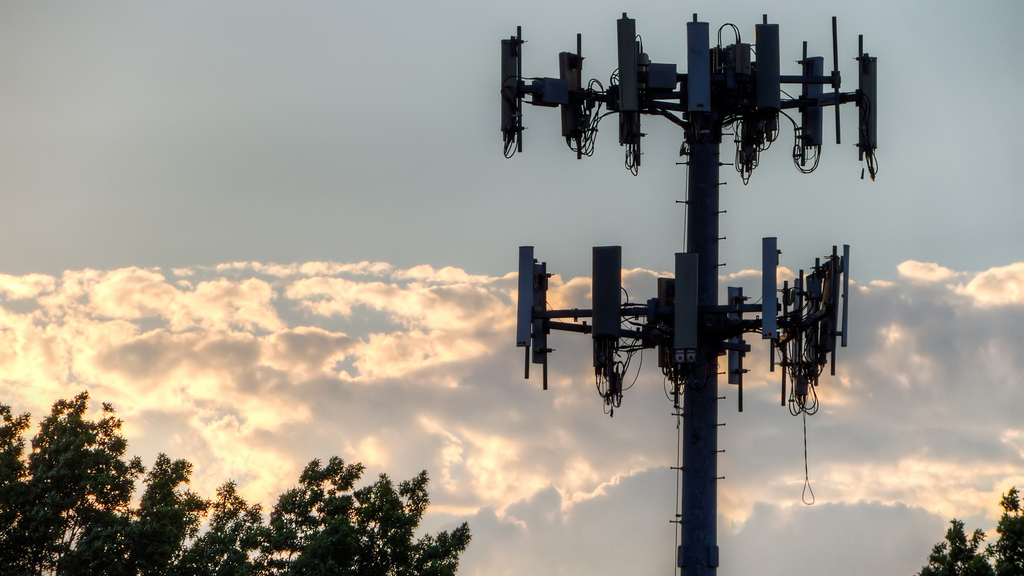Why the time of the all wireless workplace is now
It's in the air

We all dream of a that serene office environment free of clutter, cables and confusion, but just how realistic is implementing the so-called 'wireless workplace'?
Thanks to advancements in mobility, cloud and other areas, the wireless dream is looking more achievable all the time. In fact, Chris Kozup, senior director at Aruba Networks, believes organisations should be implementing wireless operations right now, insisting we have all the tools ready for the change.
To hear more on how this works in practice, we sat down with Kozup for a Q&A on the matter.
TechRadar Pro: The wireless workplace; haven't we heard it all before?
Chris Kozup: The concept of the wireless workplace has been discussed for years, but as we see a new breed of super-connected employee emerge, it's now becoming more necessary than ever.
With smartphones, tablets and other mobile devices becoming increasingly common in the workplace, employees are demanding constant mobility in order to be productive. They demand to stay connected to everything all the time and dislike the constraints of the traditional workplace.
While some offices have gone part of the way towards meeting these demands, in many cases the office is still using legacy fixed network solutions or may have a best-effort Wi-Fi network in place, which can't keep up with these hyper-mobile employees. This creates a poor user experience and excessive helpdesk calls.
Sign up to the TechRadar Pro newsletter to get all the top news, opinion, features and guidance your business needs to succeed!
Businesses now need to build truly, 'all-wireless' workplaces that accommodate these new employee needs and enable enterprise IT to meet the growing demand for mobility.
TRP: Is the modern workplace really ready to put mobile first?
CK: This new generation of workers (we call it #GenMobile) is putting mobile devices at the centre of everything they do, connecting online at every pause in the day for work and personal use. They do not want to be wired to a desk (80% indicated a preference for wireless in a recent study) – so there has to be provision for employees to work wherever and whenever they feel most productive.
Which all means IT departments must now consider this most cherished of all buzzwords - the wireless workplace.
TRP: What effect can an all wireless workplace have on productivity, could it be a negative one?
CK: It's likely to have the opposite effect. The University of Bristol, for example, will tell you that the simple act of moving about the office has dramatic effects on concentration and mental sharpness. But an increase in productivity, motivation and competitive edge are fairly intangible benefits. Difficult to put into a budget plan.
Sometimes it comes down to money, too. And it's here that the wireless office can show definite advantages over the preceding fixed wired offices.
TRP: Going wireless can be expensive and time-consuming, is it worth it?
CK: We know that a wireless office means a reduction in wired ports – but the consequence of this is a huge drop in power and cooling costs. Some large American firms embraced the All Wireless Workplace recently –and the results show an immediate return on investment.
Around $800k for a major University, $700k for an insurance firm, and $1 million saved by one of the country's largest professional services firms. Across the world, firms are making similar changes and seeing similar benefits.
TRP: With the rise of flexible working, do you think we will even need an office in 5 years?
CK: An office allows for a company's values to be reinforced under one roof. I believe there will always be offices in one form or another as there is no technology that can match face to face interaction. With this said, these offices do need to be able to accommodate flexible working hours, which is likely to become increasingly common as mobile devices keep us connected 24/7.
TRP: How do you think the all-wireless workplace might improve productivity versus working remotely?
CK: We do not believe that the office will need to compete with working remotely – rather it's about how to enable a seamless work experience in the office or remotely. The goal for IT should be to improve employee productivity in both locations.
To do this, an all wireless workplace will satisfy employee needs for flexibility while delivering reduced cost and complexity to the IT organisation. Ultimately employees will spend time in the office as well as working remotely – every location needs to be optimized to ensure the greatest benefit.
TRP: Can any office go wireless?
CK: Yes, given the correct Wi-Fi set up, any office has the opportunity to go wireless. And with mobility such a big part of everyday life for today's employee, it will almost become a necessity. By designing an all-wireless workplace to meet employee needs, enterprises can boost employee satisfaction, increase productivity and drive down IT costs.
TRP: OK, so if I want to give this wireless thing a go, what do I need to do?
CK: The best way to accommodate these needs is literally up in the air. That's why mobility-defined networks address four critical requirements to ensure success – stable air, secure air, simple air and smart air.
Stable air allows a constant level of availability, secure air provides authentication, encryption, and policy-enforcement capabilities, simple air allows work apps, printing and projecting to be mobile-device friendly and smart air optimises mobile app performance over Wi-Fi.
Mobility-Defined Networks such as this offer the best solution for the all-wireless challenge, by creating a personalised Wi-Fi experience that everyone can rely on and trust.

Désiré has been musing and writing about technology during a career spanning four decades. He dabbled in website builders and web hosting when DHTML and frames were in vogue and started narrating about the impact of technology on society just before the start of the Y2K hysteria at the turn of the last millennium.